5. Delirium (Lamberto Bava, 1987)
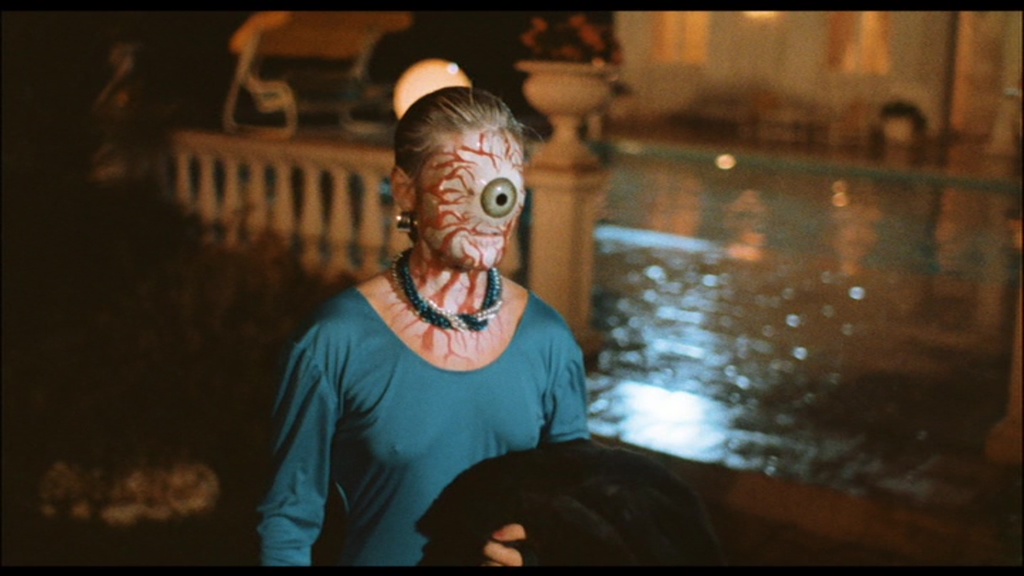
Most known for his 1985 cult-classic Demons, Lamberto Bava made a catalogue of devilishly deviant horror films throughout the 1980’s, including his 1987 feature Delirium. The son of classic Italian director of gorgeously stylish horror, Mario Bava, Lamberto significantly departed from his father’s style of vintage colour palettes and set-designs, focussing his main attention on depicting as atrocious and vile murders and monsters imaginable. Delirium follows the head of a pornographic magazine, Gloria, as she is stalked by a mysterious killer who seems to be murdering a collection of her friends and models. The murders subsequently cause a macabre increase in the magazine’s sales as the public flock to see exposed photos of the murdered victims.
What makes Delirium so bizarre is the murderous set-pieces Bava depicts in the point-of-view of the killer’s gaze. Shaking up this common slasher trope, Bava’s killer dehumanises their victims by envisioning them as various beasts. The murderer’s misogyny and repulsion towards these women runs so thickly that when committing their awful deeds, they imagine their array of beautiful victims as different grotesque monsters, such an alien with a giant eye or a half woman-half fly. Of course, the half of the woman that is kept is her bountiful, naked body.
Bava also brings an admirable flair to counter-act the deranged visions of his barbaric butcher, crafting genuinely tense scenes as the killer stalks Gloria. The sequence in a closed department store is particularly effective as the killer taunts Gloria over the shop PA system and an escalator is utilised to deliver a gloriously morbid surprise.
A fun mystery-thriller with plenty of blood and gore, Delirium definitely worth a watch for any Giallo afficionados that haven’t already discovered it.
4. A Cat in the Brain (Lucio Fulci, 1990)
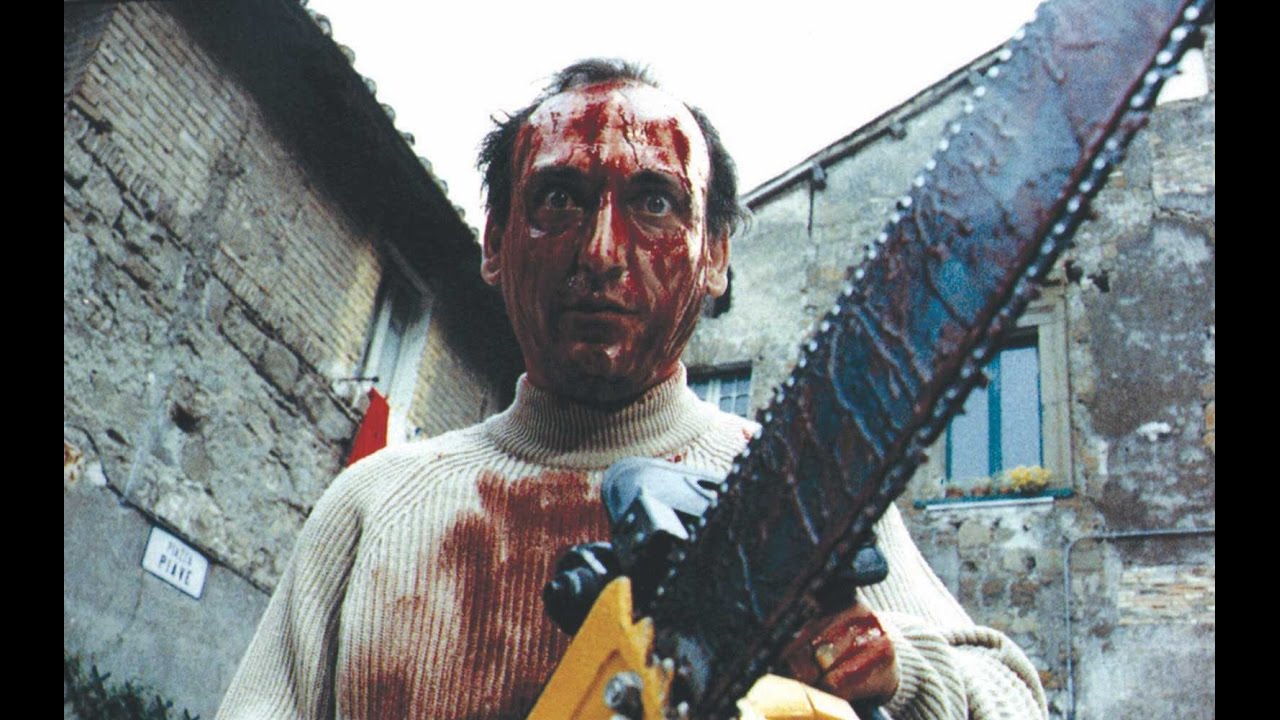
In one of his final films, Italian horror maestro Lucio Fulci introspectively turned the camera on himself and made a horror film surrounding the psychological torment involved in making a horror film. Playing a fictional version of himself, Fulci is haunted by grotesque visions influenced by the various horror and exploitation films that he makes for his living.
Like the question “What do you get the man who has everything?”, A Cat in the Brain plays on the idea of asking “How do you scare the man who has scared everybody?”, as these visions cause Fulci increasing distress and perhaps provides a window to the genuine feelings Fulci has about making his films and the effect that they have on him. Fulci confides in a psychiatrist to acquire help for his troubling hallucinations; however, unbeknown to Fulci, the psychiatrist himself is a psychopathic murderer who uses Fulci’s visions to his advantage, making him believe that he is the one actually committing all of the doctor’s crimes.
Despite his notoriety for making “low-brow” cinema, Fulci’s layered and self-analytical approach to A Cat in the Brain shouldn’t come as a surprise as his films often expose and critique the darker side of the human condition. As this film often reminds us with the sign “Dr Lucio Fulci” on his office door, Fulci was a highly educated man who passed through medical school, choosing a career in the film industry as he saw more money in it. This background in medicine may also explain Fulci’s fascination with the gruesome side of the human anatomy as there is more blood, guts and gore in the average Fulci picture than in any operating theatre.
A Cat in the Brain is particularly unrestrained in this area as heads are melted in microwaves, tongues ripped out, people in wheelchairs smashed through windows and so many decapitations that you would lose your own head if you were to try to count them. Meanwhile, the psychiatrist is an entertainingly wild caricature of a villain, taking devilish glee in murdering his victims and hoodwinking Fulci, needing only a hooded cloak and menacing laugh to be any more into the role of psychopathic killer.
A Cat in the Brain ends by further blurring the lines between fantasy and real life as Fulci toys with his audience surrounding the potential truth of his insanity. Despite the anxiety and stress Fulci alludes to in this film, he is still clearly having a lot of fun doing what he does best by providing the audience with an assortment of slaughter and surprise.
3. Slugs (Juan Piquer Simon, 1988)
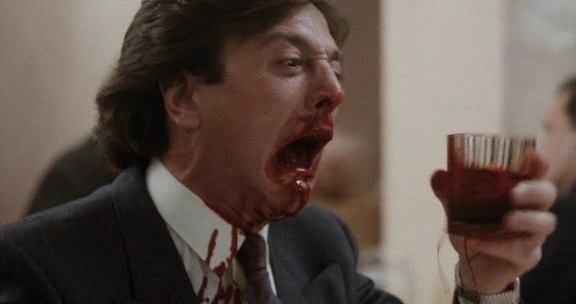
Juan Piquer Simon was a very literal filmmaker. His 1982 slasher Pieces’ poster depicted a chainsaw hovering over a dead womans body accompanied by the tagline “It’s exactly what you think it is!” and this exact same slogan could have been used six years later when he made Slugs. Instead, the marketing opted for “They ooze. They slime. They kill.”, which essentially expresses the same sentiment. With the horror movie Slugs, you get exactly what is promised as a hoard of chemically mutated slugs terrorise a small, sleepy American town.
Evolved by toxic waste to have acidic slime and a taste for human flesh, the murderous molluscs live and breed in the sewers beneath the ignorant town, able to enter people’s homes by the dozen through drains and faucets. Only local health and safety worker Mike Brady can see truth that is staring the community in the face as residents start to die mysteriously and grotesquely. It sounds too schlocky to be true.
Slugs features all of the possible scenes you could ever hope for in a film about killer slugs. People are stripped down to their flesh as they are very, very slowly overrun by the black, sliming beasts. Unable to remove them of their person, they scream towards an agonising death. In typical horror fashion, a young couple are punished for their sexual sins as while they make love in bed, they become surrounded by a gang of gastropods. The couple are then forced into a twisted game of “The Floor is Lava” in which they become the first people to actually die of burns from it.
However, the best scene of the film occurs as a local businessman goes to a posh restaurant to impress some important clients but little does he know that earlier in the film he accidentally consumed one of the slugs hidden in a head of lettuce. Just as the deal is agreed, the man falls to the floor and starts scratching the skin from his face in agony before his eyes explode with, you guessed it, worms. It seems Simon thought at least one scene in the film needed a little more of a surprise.
Inevitably in a film like Slugs, the acting is rather comical but this only serves to add to the absurdity of the film as a whole and if you were heading into this expecting Daniel Day-Lewis then you are very much mistaken. Although a remake could be the project to tempt him out of retirement.
2. The House by the Cemetery (Lucio Fulci, 1981)
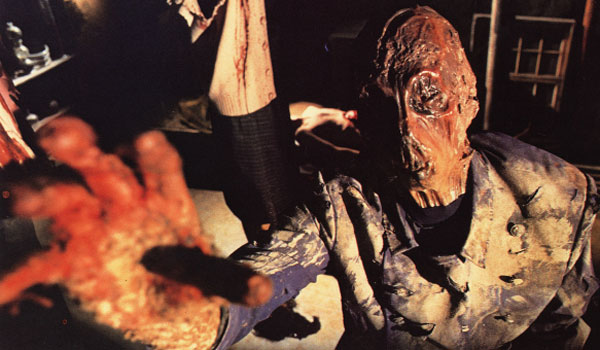
It may seem lazy to have two films directed by Lucio Fulci on this list but, in all honesty, he could have compiled all ten. The man was completely nuts. Following a succession of cult horror classics with Zombie Flesh Eaters, City of the Living Dead and The Beyond (all of which could very easily be included here if it wasn’t for their increased notoriety), Lucio Fulci produced one of his most eccentric films yet with The House by the Cemetery.
Wanting to make a tribute to H.P Lovecraft while also owing to the likes of The Shining and The Turn of the Screw, The House by the Cemetery follows the Boyle family as they move into a New England home that used to be previously be owned by the father’s ex-colleague who murdered his mistress and then committed suicide in the house. Already this should be a red flag for the family. As they settle into the house, strange events start to take place while the father, Norman, starts to discover another previous owner of the house, Doctor Freudstein, a deranged scientist who used to conduct human experiments and seems to have left a foundation of horror in the home. Meanwhile, the son, Bob, strikes up a curious friendship with a young girl that nobody else can see.
As you can see, in the synopsis alone there is a lot going on and Fulci continues to crams every spare inch of it with as much madness and mayhem as he possibly can. Whether it is the Dad’s bonkers reaction to a bat attack in which he runs with it attached to his hand for far too long before finally butchering it with a pair of scissors or the undead Doctor Freudstein with a body full of maggots and rotting flesh, collecting human body parts to attempt a sort of Frankenstein experiment on himself, there is not a single creative choice made in The House by the Cemetery that can’t be questioned in terms of sanity. Combine this with the stereotype of horrendous horror dubbing and you find yourself in a delirium of Dadaist decisions. Watch as children are heard sobbing with completely straight faces and as characters who are clearly in distress speak as if nothing is wrong. Obviously, this is poor filmmaking but it cannot be taken too seriously and is all part of the mad, frenetic fun of Fulci.
There are some lessons to be learnt from watching The House by the Cemetry, namely; never live in a house that has the old owner’s grave literally embedded into its floor and if your blatantly scarred child explains to you in horrific detail how a monster in the basement has decapitated his babysitter, then at least pay it a little bit of serious attention. Other than that, The House by the Cemetery is a rollercoaster of insanity and pure perverse entertainment that is perfect for whatever cheap laughs and thrills you may need to unwind in an evening.
1. Shivers (David Cronenberg, 1975)
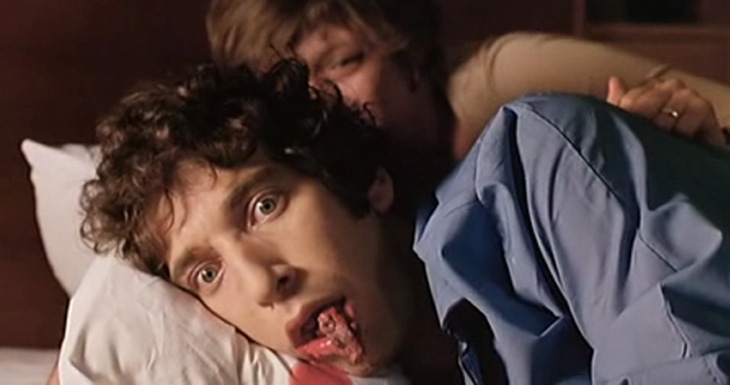
Later going on to make 1996’s Crash, David Cronenberg displays his penchant for J.G Ballard early in his career with his debut feature film Shivers. Although not a direct adaptation, Cronenberg was clearly heavily influenced by Ballard’s High-Rise in the making of this film, a novel that was finally adapted for the screen by Ben Wheatley in his widely underrated 2015 effort starring Tom Hiddlestone, as the population of a high-rise building are infected by a parasite that turns them into sex-crazed maniacs. Considering High-Rise is not known for being particularly restrained in itself, Cronenberg heightens the craze by blending it with a style of Romero-esque zombie mania. In summary, Shivers is High-Rise meets “Night of the Horny Dead”.
Featuring the worst sexually-transmitted disease imaginable until It Follows, Shivers documents the spread of a genetically modified parasite through a block of high-rise apartments. Created by a mad scientist who is briefly and disturbingly met in the opening of the film, the parasite is both an aphrodisiac and venereal disease, specifically designed to turn the world into one big, sexual orgy. Hornier than a drunken college boy in a cheap 80’s slasher, the residents of the housing complex quickly begin to infect one another as they cannot control their insatiable urge for sex. Or, as one woman puts it as she drags an unwilling butler delivering room service into her home, they’re all “hungry for love”.
Cronenberg was clearly having immensely depraved fun making Shivers as parasites are vomited over balconies onto unsuspecting old ladies and swarms of the randy ravage each other in the corridors and lobbies of the high-rise building. In the most famous scene, which is also depicted in Shivers’ magnificent poster, a parasite makes its way through the plug hole of the bath of iconic horror actress Barbara Steele like a slimy, little Freddy Krueger.
Shivers certainly set a precedent for the bizarre, unrestrained career that Cronenberg would continue to pursue throughout the rest of his career with increasingly heightened gore and unerotic sexual overtones. However, it could be strongly argued that Cronenberg never topped the madness and fun that he was having debauched debut.